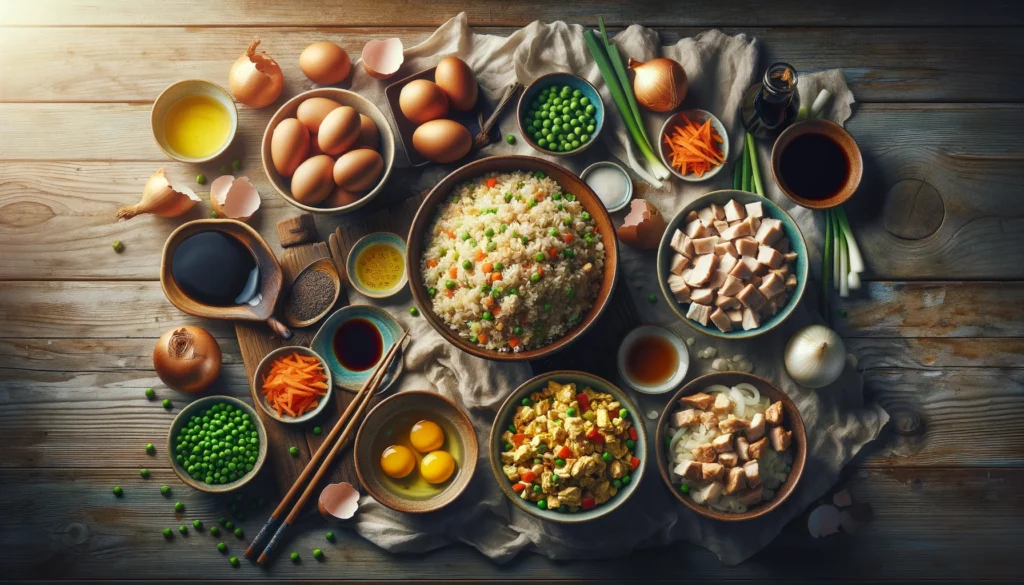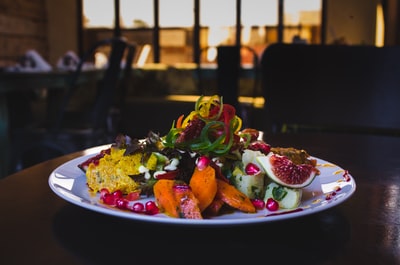A Comprehensive Guide to Mastering Chicken Fried Rice
Chicken fried rice is a dish that transcends cultural boundaries, having its roots deeply embedded in Asian cuisine before spreading its wings across the globe.
This dish has won the hearts of many thanks to its simplicity, versatility, and universal appeal. In this article, we’ll delve deep into the world of chicken fried rice, exploring everything from its core ingredients and variations to cooking techniques and nutritional insights.

Essential Ingredients and Variations
The beauty of chicken fried rice lies in its simplicity and the flexibility of its ingredients. At its core, this dish consists of:
| Ingredient | Role |
|---|---|
| Rice | The base, ideally day-old or leftover, prevents mushiness |
| Chicken | Protein; usually boneless, skinless breasts or thighs, cut into small pieces |
| Vegetables | Commonly, peas, carrots, and onions add color, texture, and nutrients |
| Eggs | Adds richness and binds the ingredients |
| Soy Sauce | Provides a savory umami flavor |
| Sesame Oil | Adds a distinctive nutty aroma |
Adapting chicken fried rice to personal tastes or dietary needs is straightforward. Vegetables can range from broccoli to spinach, and proteins can be diversified with shrimp or ham.
Brown rice or cauliflower rice are excellent bases for those seeking healthier or dietary-specific alternatives. Chicken fried rice’s versatility allows it to be a canvas for culinary creativity.
Step-by-Step Cooking Guide
Creating the perfect chicken fried rice involves a few critical steps, each contributing to the dish’s final flavor and texture:
- Cooking the Chicken: Season and stir-fry in a hot skillet until cooked. Set aside.
- Stir-Frying Vegetables: In the same skillet, sauté your vegetables until tender.
- Combining Ingredients: Push vegetables to one side, scramble eggs on the other, then mix. Add rice, chicken, soy sauce, and stir-fry until evenly mixed and heated.
The key to exceptional fried rice is high heat and the right type of oil, such as sesame or neutral vegetable oil. This ensures that each grain of rice is perfectly coated and flavorful.

Customizations and Dietary Adjustments
Chicken fried rice can be easily customized to fit various dietary preferences:
- Vegetarian/Vegan: Omit chicken and use tofu or more vegetables.
- Gluten-Free: Substitute soy sauce with tamari or a gluten-free alternative.
- Low-Carb: Replace rice with cauliflower rice.
Adding ingredients like nuts can introduce new textures and boost the nutritional profile, making the dish more satisfying and healthful.
Nutritional Information
Chicken fried rice can be both a flavorful and nutritious meal option. The dish’s nutritional content varies based on the ingredients used but generally offers a good balance of proteins, carbohydrates, and fats. For a healthier version, consider:
- Using brown rice for more fiber and nutrients.
- Increasing the vegetable-to-rice ratio for fewer carbs and more vitamins.
- Limiting oil and soy sauce to reduce fat and sodium content.
Common Mistakes and How to Avoid Them
Achieving the perfect chicken fried rice requires avoiding common pitfalls:
- Using Freshly Cooked Rice can result in mushy fried rice. Instead, use day-old rice that’s had time to dry out.
- Overcrowding the Pan: Cook in batches to ensure each ingredient can fry properly.
Understanding these tips ensures a dish with distinct grains, perfectly cooked ingredients, and a harmonious blend of flavors.

Side Dishes and Pairings
Complementing chicken fried rice with appropriate side dishes can elevate the meal. Consider the following:
| Side Dish | Description |
|---|---|
| Egg Rolls | A crispy, vegetable-filled complement |
| Steamed Dumplings | Offers a soft texture contrast |
| Bok Choy | Adds a fresh, lightly cooked vegetable side |
| Stir-Fried Vegetables | Introduces additional textures and flavors |
Pairing chicken fried rice with light beverages such as green tea or crisp white wine can balance the dish’s savory flavors.
Storing and Reheating
To maintain the quality of leftover chicken fried rice, follow these storage guidelines:
- Refrigeration: Cool to room temperature, then store in airtight containers for 5-7 days.
- Freezing: Freeze in suitable containers for up to three months for extended preservation.
When reheating, ensure the rice is heated to at least 165°F to ensure safety and restore its fresh taste and texture.
Conclusion
Chicken fried rice stands as a testament to culinary versatility and global appeal. By mastering the basic ingredients and techniques, you can explore an array of variations to suit any dietary preference or nutritional goal. With this guide, creating delicious, satisfying, and nutritious chicken fried rice at home is within anyone’s reach.
We invite you to roll up your sleeves and try your hand at making chicken fried rice. Experiment with different ingredients, explore variations, and find your perfect combination. Share your culinary adventures and discoveries with us, enriching the global tapestry of chicken fried rice enthusiasts. Happy cooking!
Citations:
https://www.cookingclassy.com/chicken-fried-rice/
https://www.allrecipes.com/recipe/16954/chinese-chicken-fried-rice-ii/
https://www.delish.com/cooking/recipe-ideas/a25635966/chicken-fried-rice-recipe/
https://therecipecritic.com/chicken-fried-rice/







